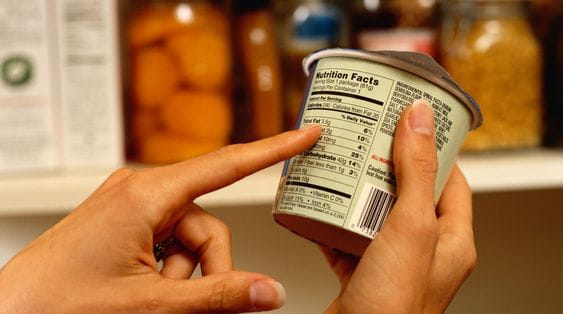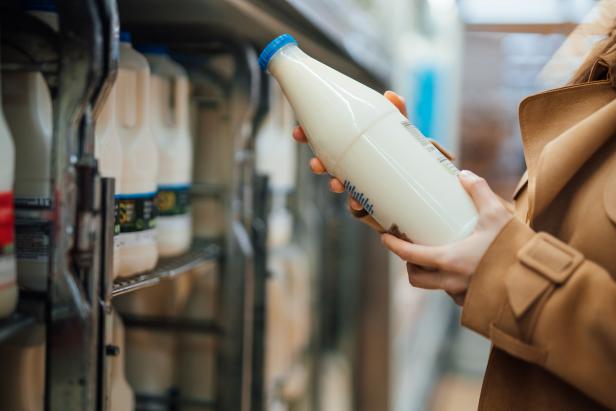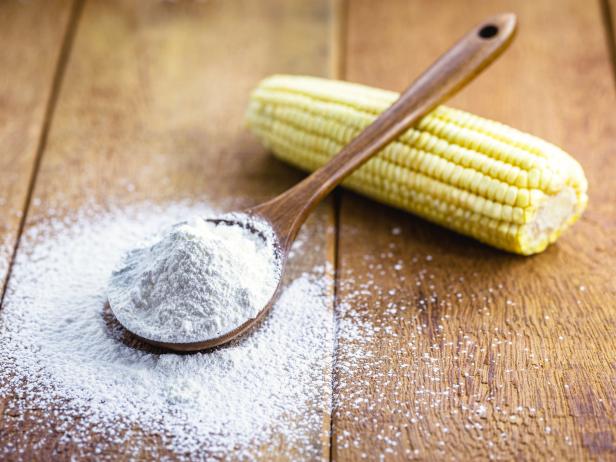Common Food Additives

Jars of sauce or a bottle of soda picked up in the supermarket read like a list of artificial food additives. The ubiquity of additives such as xanthan gum, high-fructose corn syrup, and sodium benzoate in most ordinary food products is the response.
Synthetic food means chemicals that are manufactured instead of naturally obtained. In the example of the artificial sweetener aspartame, it simply has no plant ingredients. Potassium sorbate, thickener-CMC, and artificial flavors like monosodium glutamate are used in synthetic food to delay the spoiling ability and extend the shelf life.
Types of Common Additives in Food
In general, the additives that are rather an indispensable part of modern food industry include the synthetic substances utilized for enhancing the taste, appearance, or shelf life of the foodstuff. Packaged food consumption is becoming a fast-growing trend, which makes the discussions about health effects of these additives quite controversial.
- Preservatives:
Preservatives may be the most efficient food additive, which is almost used to control spoilage that is caused directly by bacteria, fungi, or oxidation. The most common additives used are sodium benzoate, sulfur dioxide, and nitrites. Their usage comes without health problems, the main controversy is that. A foodstuff will never spoil if its shelf life is everlasting. For example, some nitrites such as nitrosamines are known carcinogens and they can lead to the development of cancer; hence, one is more susceptible to cancer. These compounds are regulated by the FDA, which limits their use in a small concentration range, where they are still useful but are also safe for patients. - Sweeteners:
Standard products are designed with both artificial and natural sweeteners to give a taste to normal foods and drinks. Maltodextrin and sucralose artificial sweeteners are ubiquitous, especially in diet soda and low-calorie products. Thus, they are commonly used. - Color Additives:
Color food additives are used to enhance the original color of the food or to restore it after changes. Furthermore, the effects of the children’s hyperactivity, and health problems, are certainly AI food colorants. Hence, the realm of natural dyes is progressing from hugely demanded food pigments, like beetroot extract, and turmeric. - Flavor Enhancers:
With the use of flavor enhancers, such as MSG and I+G, in different foodstuff items, you can taste the flavor more prominently. They work just as good as improving the flavors, but health concerns regarding the MSG have started to arise. Such circumstances lead to greater attention being paid to it by some consumer groups, and others trying to find out its impact on health. - Acidulants:
Acidulants are used to adjust and keep a certain level of pH in the food products. Besides, they serve a dual function; they either neutralize the acidity or alkalinity and furthermore, they act as the preservatives. Through this means the shelf life of products is increased, though the taste of some of them may get sour. - Emulsifiers and Stabilizers:
They play a key role in ensuring that foodstuffs retain their desired looks all the time. Those two elements will make it possible to maintain the optimal ones, which is a must for customer satisfaction. Lecithin and glyceryl monostearate are the most common emulsifiers which play the role of binding components together and thus prevent their separation much like oil and water which are embraced by these emulsifiers to bind together.
- Health Concerns:
The question of whether substances like aspartame and sodium nitrite could be contributing to the development of cancer. Some preservatives can behave as carcinogenic imitators that form nitrosamines therefore many researchers are considering the safety of certain food additives. - Regulatory Standards:
The FDA evaluates food additives; therefore, it subjects them to tests to discover the carcinogenic effects and determine the safe doses. Nevertheless, more and more voices are in favor of stronger measures to ban the additives being marked as potential carcinogen tumor-inducing agents. - Consumer Awareness:
A segment of the consumer market which is very sensitive to food quality with low additives and more from nature just to keep cancer away is growing. People want clearly labeled products and are keen on finding out the implications of the additives that might trigger cancer pressures.
Chemical Contamination and Food Safety
The food contamination control from chemicals could be an issue in which chemicals that could be present in the food chain need to be accounted for.

Identifying Toxic Foods and Chemicals:
Harmful foods include food high in mercury — a toxic element found in some seafood — or contaminated with pesticides. “Toxins in food” is primarily made up of both natural and artificial chemicals like pathogens and industrial substances.
Sources of Chemical Contamination:
Contamination can happen at different stages, ranging from harvesting on the farm to table. Pesticides, BPA from packaging materials and processing aids are some of the popular ingredients that lead to health problems.
Foods to Avoid and Ingredients to Watch:
With the increased understanding of research consequences, toxic ingredients are gradually being added to the list. The topic of harmful foods or products that contain chemicals is largely being promoted these days and reminds people about the necessity of being careful with their consumption habits.
Regulations and Safety Measures:
To protect public health, comprehensive measures are implemented to eliminate the likelihood of a relapse of food. Certain authorities such as the Food and Drug Administration (FDA) and other bodies set maximum residue limits for pesticides and food toxics. Their mission is to keep a standard of food that we must eat to avoid diseases as a result of the toxins we consume in the process of nourishing ourselves.
Reducing Exposure to Harmful Chemicals:
To fall ate the risk of food contamination with poisonous chemicals, it is recommended to follow guidelines on bad ingredients and unhealthy ingredients. They can be the most harmful types which comprise of the handcuffing agents and artificial hues which have been characterized as health dangerous materials.
Consumer Empowerment through Information:
Information today is everywhere, and it is because of that phenomenon that consumers are aware and aware-consistent on what they consume to avoid the chemicals we need to ingest daily. CPDs alongside the symbolization of packaging provide a customer with the ability to detect and avoid the most poisonous species of food.
The Ongoing Battle Against Food Contaminants:
Of course, it is a big fight and all our efforts. However, we still struggling hard to defeat it. Safety is one of the keys here. The components of a production chain have to be known and be taken care of and the standards ought to be checked regularly to be scientifically correct and up to date.

The main element of the simple tale of food processing and eating is crucially important because they take the part of the heroes or the villains in the complex food tales. Naturally produced and inorganic makeup entry ingredients range from colorants to flavor enhancers with the effect of offering convenient, attractive, and durable food choices. With the acquisition of more and more knowledge, these benefits are not such a big obstacle as they can be just simply acquainted by some chemical pollution.
We often link synthetic food with what we know as highly processed products that have sugar quantities and artificial colors and preservatives. This means that even though these chemicals make products enrich they could still accrue the unwanted chemical pollutants in our diet. Why artificial food can be equally regarded as a showcase of human ingenuity more than the intricacy of life?
Chemical contamination in food can stem from a multitude of sources: the proportions of such residues of pesticides, manufacturing debris, and chemicals from packaging may be incredibly high. Toxic substances and organic contaminants constitute a major health threat everywhere. Regulatory authorities might place an embargo on food additives based on a specific number of ingredients in the list of chemicals that are harmful in food that should be avoided which is changing continually.
The talk of nature and what is natural has regained effectiveness in the counterpoint to the world of artificiality and additives. The products which are among such goals with shorter and readable ingredient lists play a crucial role today. It is not because of fashion but because quantities and quality change a person’s life from the ground up. For example, an appeal to fear is the strategy that at once lessens the possibility of food toxin poisoning and at the same time responds to the emerging food philosophy of as nature-like as possible.
Food taken in its freshest form without processing is a major aspect of a diet directed to reducing the harmful effects associated with food additives, preservatives and the negative preservatives that is brought you processed food. Processed beverages on the other hand did not get to us due to the reason that less processed selections in the form of fresh produce do not only reduce our intake of artificial and synthesized additives but also the well-known chemicals that are believed to accelerate cancer development and other health-related pathologies.
Our weapon against marketing giants like it is to provide our customers with information and choice. After the article, we will be able to tell the difference between good and bad food additives. Armed with the knowledge of what food additives are, their definition, and how to easily identify them on packaging labels will make us big shopping machines in the supermarket. FDA carcinogen list and the studies made by independent organizations can be instrumental in our awareness of given to organic choice and risk to take lesser toxic substances.
The real figurative expression of food additives is not black and white. However, while some of the preservatives that are used prolong the storage life, they also contain other components that are related to human health. This parameter is not simple only relying on the manufacturer of food products should consider the reduction of the harmful chemicals, but at the same time, the consumer also has the responsibility for the smart choice of food commodity. We are responsible for setting up openness and security for our food supply and, at the same time, strive to feed ourselves with food that has nourishing and sustainable characteristics without overdoing chemical intervention.
To summarize, food additives without doubt have permanently sneaked into our modern type of food stuff and our foremost responsibility is to opt for mildly processed dining products based on their natural form. We can accomplish it by way of implementing natural materials that are exempted from using artificial additives and also we will give a lot of emphasis to the use of simple food stuffs that are safety and health-oriented. The path to a safer diet depends on many factors including conscience, the drawing of a line between table food substitutes and environmentally favorable elements, and the contribution of attention.
Related Posts:
1. what is ammonium bicarbonate
2. The necessity of food preservation
